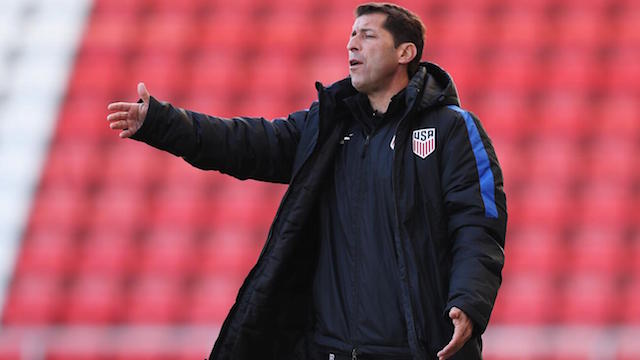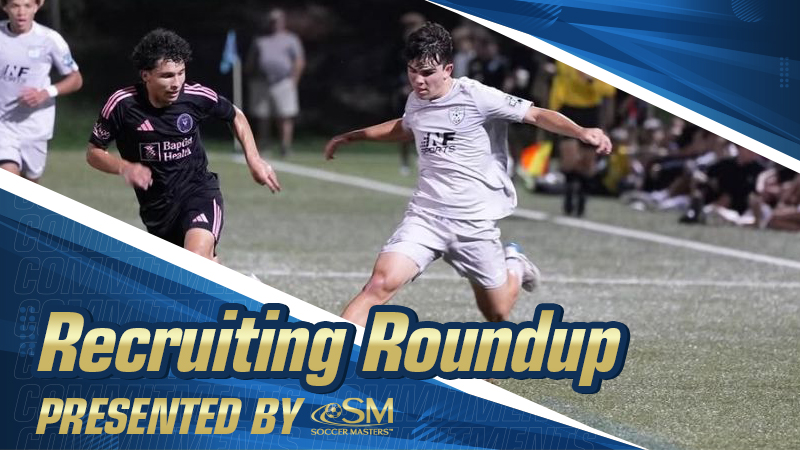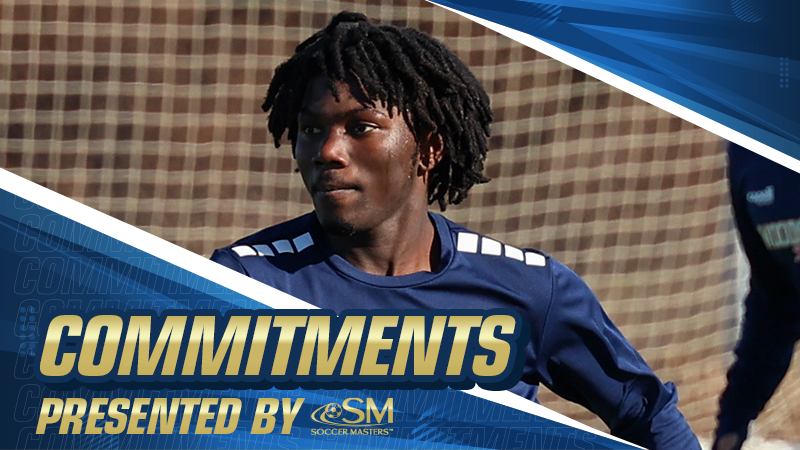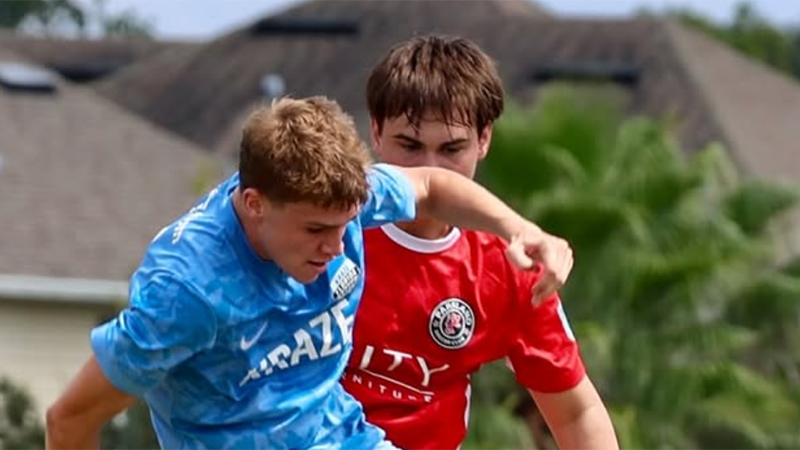U20 Preview: CONCACAF beckons for U.S.

Tab Ramos is nervous.
There is something to be said for knowing what to expect and having the wherewithal to prepare accordingly. There is a commonly repeated refrain that rookies are rarely nervous in big situations because they don’t have the mental capacity to understand why they should be nervous in the first place. The bliss of inexperience.
Ramos is not inexperienced. He knows better. On Saturday, he’ll man the sideline for the U.S. U20 MNT for the third consecutive World Cup qualifying cycle for the CONCACAF opener against Panama in Costa Rica. In 2013 it was Mexico. In 2015 it was Jamaica. Both times the U.S. qualified, once easily by making a run to the final and again in a tightly played playoff against the hosts.
Now, it’s Costa Rica, where the U.S. has a chance to qualify for a third straight under Ramos. CONCACAF is improving, even on the youth stage, and Ramos has seen the transformation at a more molecular level over the past half decade than perhaps anyone. So yes, perhaps he’s a mite nervous entering the tournament. But as far as he’s concerned, he’d be worried if he wasn’t.
“I know how difficult it is,” Ramos said Thursday on a conference call with reporters. “That tells me that, if I’m nervous, chances are we’re going to be pretty well prepared.”
On Saturday at 3:30 p.m. ET, the U.S. opens its group stage with an admittedly nerve-inducing match against Panama. The Panamanians were probably the best team in the tournament in 2015, even thought they lost to Mexico in a hard-fought final that year. They managed to notch a deserved 1-0 win over the U.S. in the group stage two years ago, and the U.S. has to face its bugaboo out of the gate. The good news is it probably doesn’t matter if the U.S. wins or loses. Haiti and St. Kitts & Nevis are cannon fodder, and both Panama and the U.S. should have little trouble sweeping both from the field in blowouts. If that happens, Panama and the U.S. will both move into the second grouping phase. As long as the U.S. finishes in the top two in both phases, they’ll qualify without issue.
Pre-tournament scouting for youth events like these is notoriously difficult, especially against lesser known teams, so squads tend to focus more inwardly than outwardly. And in the U.S.’s case, that means coming to terms with some good and some unknowns.
In 2015, Ramos reaped the benefit of one of the best center back duos in U20 MNT history (Cameron Carter-Vickers and Matt Miazga), a star No. 8 (Emerson Hyndman), a no-doubt starter between the posts (Zack Steffen) a natural left back (John Requejo), and a veteran No. 6 with an unquestioned track record (Kellyn Acosta). The U.S. has none of those things in stone right now. The center back pool is talented but unclear, with Erik Palmer-Brown, Auston Trusty, Justed Glad and Tommy Redding all competing for minutes. There isn’t a connector with Hyndman’s all-around ability on the roster, although Luca de la Torre might be close (they were both reared in the same Fulham academy). There isn’t a natural left back on the roster, and RSL No. 6 Danny Acosta is likely to swing out wide to fill the gap after training there with his club of late. Jonathan Klinsmann and JT Marcinkowski have been locked in a duel for the starting gig for much of the past year, and Klinsmann, who is not at Steffen’s level at this stage of his career, only recently won the job. And while Tyler Adams certainly looks like the real deal as a No. 6, he’s playing up a cycle and turned 18 just a week before the Panama match.
The talent is certainly there to kick on and advance easily out of CONCACAF. But there are significantly more questions about lineup fit than there were two years ago.
To that end, Ramos demurred when asked about a specific formation for the tournament. In 2015, the U.S. ran out an aspirant 4-4-3 but drew Guatemala and lost to Panama in the system before reverting back to a 4-4-2 for the remainder of the tournament (it was used at the World Cup as well). As for Saturday and beyond, we’ll just have to wait and see.
“I like for the team to dictate what the formation is going to be,” Ramos said. “I’m not stuck to any one thing. So depending on the players we have available and on the qualities of the players will determine for the particular games what formation we’re going to play. So I’m not a big believer that you need to stick to a certain formation for a long period of time. I like to put the players in the best situation possible to get the best out of them in the position where they can produce more for the team. I’m not too concerned with that.”
As far as those qualities are concerned, the U.S. should have little trouble scoring goals.
Whatever formation Ramos ultimately does roll out, he’ll have plenty of attacking options. The mega-talented forward trio of Brooks Lennon, Emmanuel Sabbi and Jeremy Ebobisse are proven commodities on the international stage, and all three are worthy of starting minutes. Throw in incendiary threats like Coy Craft and Jonathan Lewis, both of whom have stunning speed, and the U.S. should be a nightmare in space in the final third.
The broader question, though, is who opens up that space. When asked about the playmaker of this group, Ramos referred back to the 2015 team, which also didn’t have a clear No. 10. In the World Cup that year, the U.S. relied on a sort of hybrid creative role between Hyndman and Gedion Zelalem, both of whom prefer to reside deeper in the midfield. It worked at times and did enough to get the U.S. through to the quarterfinal, but it was largely on the back of the immense defensive display, and the U.S. didn’t exactly produce a ton of chances on the other end.
The story is similar this year. The only obvious playmaker who prefers to march up to the enemy line is RSL’s Sebastian Saucedo, who’s filled that role before. In lieu of that, the U.S. will again turn to its speed on counters, pressing through the midfield and funneling chances to its athletic wide players. Tommy Thompson had a huge CONCACAF tournament in 2015 precisely because he had so many opportunities on the flank. The same should be the case this go-round.
In 2013, Ramos had a quality technical group that was bitten at times by its lack of outright athleticism. The 2015 team resided on the other end of the spectrum. Ramos thinks his 2017 U20 iteration is somewhere in the middle. Whether that’s cause for celebration or not, we’re about to find out in Costa Rica.
“I think we have tremendously talented players skill-wise, but we also have a physical component,” Ramos said, “and that’s really important for hopefully after we get through (qualifying) to compete with some of the better teams in the world.”
Headlines
- Recruiting Roundup: December 22-January 4
- 2026 Women's Division I Transfer Tracker
-
Winter Girls HS Players to Watch

-
ECNL Boys FL: Under-16 Players to Know

-
Commitments: Woodstock to Wake Forest

-
Winter Boys High School Players to Watch

- ECNL Boys FL Selection Game Rosters
- TDS Boys Regional Rankings: Class of 2028
- 25 Male Players That Dominated 2025
-
ECNL Boys Florida: U17 Players to Know




